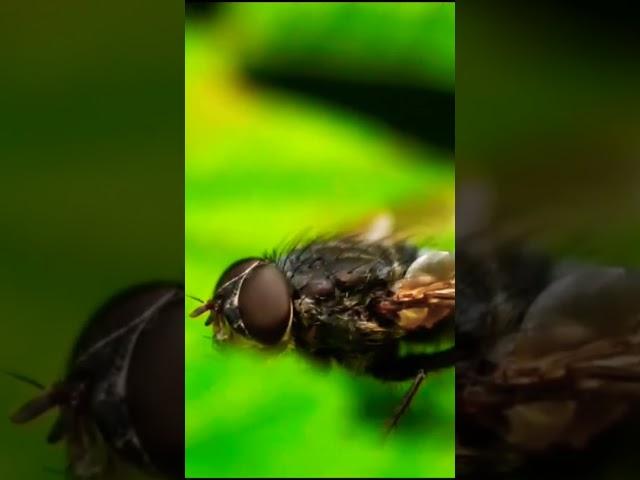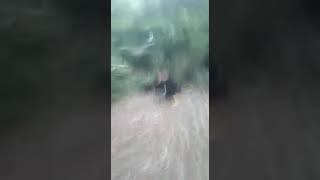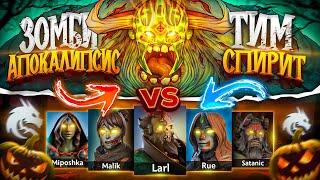
Flie is a Very IMPORTANT Animal
Flies are insects of the order Diptera, the name being derived from the Greek δι- di- "two", and πτερόν pteron "wing". Insects of this order use only a single pair of wings to fly, the hindwings having evolved into advanced mechanosensory organs known as halteres, which act as high-speed sensors of rotational movement and allow dipterans to perform advanced aerobatics. Diptera is a large order containing an estimated 1,000,000 species including horse-flies,[a] crane flies, hoverflies, mosquitoes and others, although only about 125,000 species have been described.
Fly
Temporal range: 245–0 Ma
PreꞒꞒOSDCPTJKPgN
Middle Triassic – Recent
Diptera from different families:
Housefly (Muscidae) (top left)
Haematopota pluvialis (Tabanidae) (top right)
Ctenophora pectinicornis (Tipulidae) (mid left)
Ochlerotatus notoscriptus (Culicidae) (mid right)
Milesia crabroniformis (Syrphidae) (bottom left)
Holcocephala fusca (Asilidae) (bottom right)
Scientific classificationEdit this classification
Domain:
Eukaryota
Kingdom:
Animalia
Phylum:
Arthropoda
Class:
Insecta
Superorder:
Panorpida
(unranked):
Antliophora
Order:
Diptera
Linnaeus, 1758
Suborders
Nematocera (paraphyletic) (inc Eudiptera)
Brachycera
An Anthomyiidae species showing characteristic dipteran features: large eyes, small antennae, sucking mouthparts, single pair of flying wings, hindwings reduced to clublike halteres
Flies have a mobile head, with a pair of large compound eyes, and mouthparts designed for piercing and sucking (mosquitoes, black flies and robber flies), or for lapping and sucking in the other groups. Their wing arrangement gives them great manoeuvrability in flight, and claws and pads on their feet enable them to cling to smooth surfaces. Flies undergo complete metamorphosis; the eggs are often laid on the larval food-source and the larvae, which lack true limbs, develop in a protected environment, often inside their food source. Other species are ovoviviparous, opportunistically depositing hatched or hatching larvae instead of eggs on carrion, dung, decaying material, or open wounds of mammals. The pupa is a tough capsule from which the adult emerges when ready to do so; flies mostly have short lives as adults.
Diptera is one of the major insect orders and of considerable ecological and human importance. Flies are important pollinators, second only to the bees and their Hymenopteran relatives. Flies may have been among the evolutionarily earliest pollinators responsible for early plant pollination. Fruit flies are used as model organisms in research, but less benignly, mosquitoes are vectors for malaria, dengue, West Nile fever, yellow fever, encephalitis, and other infectious diseases; and houseflies, commensal with humans all over the world, spread foodborne illnesses. Flies can be annoyances especially in some parts of the world where they can occur in large numbers, buzzing and settling on the skin or eyes to bite or seek fluids. Larger flies such as tsetse flies and screwworms cause significant economic harm to cattle. Blowfly larvae, known as gentles, and other dipteran larvae, known more generally as maggots, are used as fishing bait, as food for carnivorous animals, and in medicine in debridement, to clean wounds.
Fly
Temporal range: 245–0 Ma
PreꞒꞒOSDCPTJKPgN
Middle Triassic – Recent
Diptera from different families:
Housefly (Muscidae) (top left)
Haematopota pluvialis (Tabanidae) (top right)
Ctenophora pectinicornis (Tipulidae) (mid left)
Ochlerotatus notoscriptus (Culicidae) (mid right)
Milesia crabroniformis (Syrphidae) (bottom left)
Holcocephala fusca (Asilidae) (bottom right)
Scientific classificationEdit this classification
Domain:
Eukaryota
Kingdom:
Animalia
Phylum:
Arthropoda
Class:
Insecta
Superorder:
Panorpida
(unranked):
Antliophora
Order:
Diptera
Linnaeus, 1758
Suborders
Nematocera (paraphyletic) (inc Eudiptera)
Brachycera
An Anthomyiidae species showing characteristic dipteran features: large eyes, small antennae, sucking mouthparts, single pair of flying wings, hindwings reduced to clublike halteres
Flies have a mobile head, with a pair of large compound eyes, and mouthparts designed for piercing and sucking (mosquitoes, black flies and robber flies), or for lapping and sucking in the other groups. Their wing arrangement gives them great manoeuvrability in flight, and claws and pads on their feet enable them to cling to smooth surfaces. Flies undergo complete metamorphosis; the eggs are often laid on the larval food-source and the larvae, which lack true limbs, develop in a protected environment, often inside their food source. Other species are ovoviviparous, opportunistically depositing hatched or hatching larvae instead of eggs on carrion, dung, decaying material, or open wounds of mammals. The pupa is a tough capsule from which the adult emerges when ready to do so; flies mostly have short lives as adults.
Diptera is one of the major insect orders and of considerable ecological and human importance. Flies are important pollinators, second only to the bees and their Hymenopteran relatives. Flies may have been among the evolutionarily earliest pollinators responsible for early plant pollination. Fruit flies are used as model organisms in research, but less benignly, mosquitoes are vectors for malaria, dengue, West Nile fever, yellow fever, encephalitis, and other infectious diseases; and houseflies, commensal with humans all over the world, spread foodborne illnesses. Flies can be annoyances especially in some parts of the world where they can occur in large numbers, buzzing and settling on the skin or eyes to bite or seek fluids. Larger flies such as tsetse flies and screwworms cause significant economic harm to cattle. Blowfly larvae, known as gentles, and other dipteran larvae, known more generally as maggots, are used as fishing bait, as food for carnivorous animals, and in medicine in debridement, to clean wounds.
Тэги:
#¿Do_You_Know_NATURE? #Wildlife #Nature #Ambience #Ecosystems #Wild_Animal_Video #Extreme_ENDANGERED #Animal_Documentary #LIFE #Big_Strong_predators #FOREST #Mountain #Lake #Ramsar_Ecosystems #Wild_Life_DOCUMENTARY #predator #King #DINOSAUR #Water #AIR #Earth #Mountain #FOREST #Animal #Documentary_LIFE #Endangered #Wild #Life #DOCUMENTARYКомментарии:
Flie is a Very IMPORTANT Animal
¿Do You Know NATURE?
Las CANCIONES de RAP más TRISTES
BDP Batalla De Promesas
I found the FASTEST cars in Forza...
Goosiest
Foto Smanettoni remix
simonegpr
Как поиграть в S.T.A.L.K.E.R. на смартфоне?
Господин Глоксиния
[CS:GO] Noob with Deagle #1
ilkinigan
Tercyduk lagi pada mau mesum ET akhirnya kepergok sama bapa2
Riel motovlog Riding








![[CS:GO] Noob with Deagle #1 [CS:GO] Noob with Deagle #1](https://smotrel.cc/img/upload/MFNmNHE3VlFxb1I.jpg)

















